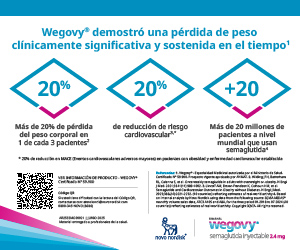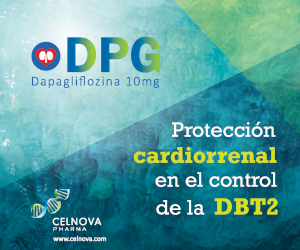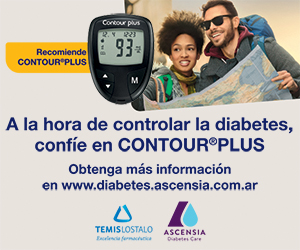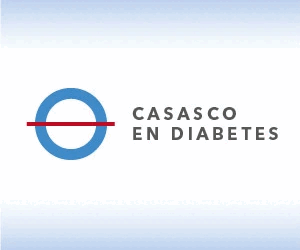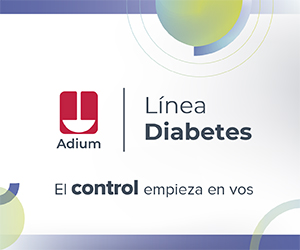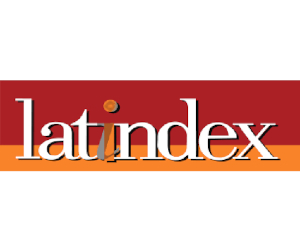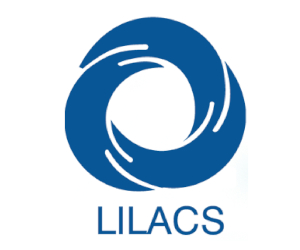XX Conference of the Graduate Committee of the Argentine Society Diabetes Topic: Obesity and Diabetes. Table 1: Psychosocial aspects of people with diabetes and obesity
DOI:
https://doi.org/10.47196/diab.v59i3Sup.1203Keywords:
diabetes mellitus, obesity, psychosocial factors, eating behavior, obesity phenotypes, mood disorders, psychotropic drugs, bariatric surgery, quality of life, sexual dysfunction, motivational interviewing, health coaching, weight management, depression, anxietyAbstract
Introduction: diabetes mellitus (DM) and obesity are chronic, multifactorial, and frequently coexisting diseases. Effective management requires not only medical interventions but also an understanding of the psychosocial factors that influence their development, progression, and therapeutic response.
Materials and methods: a review of the literature was conducted, prioritizing clinical practice guidelines, systematic reviews, meta-analyses, and clinical trials from the last 10 years. Evidence selection was aimed at identifying relevant findings in the clinical and psychosocial context of obesity and DM.
Results: dysfunctional dietary patterns, influenced by emotional, social, and biological factors, are key factors in maintaining excess weight. Phenotypic stratification of obesity allows for personalized treatment with improved weight loss outcomes. A high prevalence of mood disorders (depression, anxiety) was identified in people with DM and obesity, with bidirectional interactions affecting adherence and metabolic control. The use of psychotropic medications, especially antipsychotics and antidepressants, is frequently associated with weight gain. Quality of life and sexual function are impaired, and there is an elevated psychosocial risk in certain subgroups, particularly those undergoing bariatric surgery. Behavioral tools such as motivational interviewing and health coaching demonstrate clinical and subjective benefits, facilitating patient empowerment.
Conclusions: a psychosocial approach to DM and obesity is essential for achieving effective, sustainable, and person-centered interventions. Incorporating communication tools and behavioral change strategies, respecting patients' experiences and belief systems, improves not only clinical parameters but also their overall well-being. It is recommended that psychosocial assessment be systematically integrated into all levels of care.
References
I. Anger V, Katz M. Relación entre IMC, emociones percibidas, estilo de ingesta y preferencias gustativas en una población de adultos. Actualización en Nutrición 2015; 16(1):31-36.
II. Berthoud HR. Metabolic and hedonic drives in the neural control of appetite: Who is the boss? Current Opinion in Neurobiology 2011; 21(6):888-896. doi: 10.1016/j.conb.2011.07.003.
III. López-González L, García-Lorda P. Conductas alimentarias disfuncionales y su relación con la obesidad: revisión y propuesta de intervención. Nutrición Hospitalaria 2016;33(2):310-317.
IV. Stunkard AJ, Wadden TA. Psychological aspects of severe obesity. The American Journal of Clinical Nutrition 1993;55(2 Suppl):524S-532S.
V. American Psychiatric Association. Diagnostic and statistical manual of mental disorders 2013. 5th ed. Arlington, VA: American Psychiatric Publishing.
VI. Aranceta-Bartrina J, Pérez-Rodrigo C. Patrones de comportamiento alimentario: claves para el abordaje de la obesidad. Revista Española de Nutrición Humana y Dietética 2016;20(4):245-253.
VII. Lutz M. Patrones y sistemas alimentarios saludables y sostenibles: una urgencia planetaria. Medwave 2021;21(07): e8257.
VIII. Bray MS, Loos RJF, McCaffery JM, Ling C, Franks PW, Weinstock GM, et al. NIH working group report-using genomic information to guide weight management: From universal to precision treatment. Obesity 2016 Jan;24(1):14-22.
IX. Sacoto D, Hurtado MD, Acosta A. Precision medicine and obesity. Handb Exp Pharmacol 2022;274:467-85.
X. Heymsfield SB, Wadden TA. Mechanisms, pathophysiology, and management of obesity. N Engl J Med 2017 Jan 19;376(3):254–-.
XI. Acosta A, Camilleri M, Shin A, et al. Quantitative gastrointestinal and psychological traits associated with obesity and response to weight-loss therapy. Gastroenterology 2015;148:537-546.E4. doi: 10.1053/j.gastro.2014.11.020.
XII. Camilleri M. Peripheral mechanisms in appetite regulation. Gastroenterology 2015 May;148(6):1219-33.
XIII. Acosta A, Camilleri M, Abu Dayyeh B, Calderón G, González D, McRae A, et al. Selection of antiobesity medications based on phenotypes enhances weight los. A pragmatic trial in an obesity clinic. Obesity 2021 Apr;29(4):662-71.
XIV. Cifuentes L, Ghusn W, Feris F, Campos A, Sacoto D, De la Rosa A, et al. Phenotype tailored lifestyle intervention on weight loss and cardiometabolic risk factors in adults with obesity: a single-centre, non-randomised, proof-of-concept study. Clinical Medicine 2023 Apr;58:101923.
XV. World Health Organization. Depression and other common mental disorders. Global health estimates. 2017. Disponible en: https://www.who.int/publications/i/item/depression-global-health-estimates.
XVI. Vos T, et al. Global, regional, and national incidence, prevalence, and years lived with disability for 328 diseases and injuries for 195 countries, 1990-2016: a systematic analysis for the Global Burden of Disease Study 2016. The Lancet 2017;390(10100):1211-1259.
XVII. Puhl RM, LuedickeJ, Heuer CA. The stigmatizing effect of visual media portrayals of obese persons on public attitudes: does race or gender matter? Journal of Health Communication 2013;18(7):805-826.
XVIII. Alimoradi Z, et al. Weight-related stigma and psychological distress. A systematic review and meta-analysis. Clinical Nutrition 2020;39(7):2001-2013.
XIX. Rubino F, et al. Joint international consensus statement for ending stigma of obesity. Nature Medicine 2020;26(4):485-497.
XX. Dawes A J, et al. Mental health conditions among patients seeking and undergoing bariatric surgery: a meta-analysis. JAMA 2016;315(2):150-163.
XXI. Tomiyama AJ. Stress and obesity. Annual Review of Psychology 2019;70:703-718.
XXII. Borgland. Can treatment of obesity reduce depression or vice versa? JPN 2021;46(2):E313-E318.
XXIII. Zhao G, et al. Waist circumference, abdominal obesity, and depression among overweight and obese U.S. adults: National Health and Nutrition Examination Survey 2005-2006. BMC Psychiatry 2011;11:130.
XXIV. Koo JW, Duman RS. IL-1beta is an essential mediator of the antineurogenic and anhedonic effects of stress. Proceedings of the National Academy of Sciences of the United States of America 2008;105(2):751-756.
XXV. Roy T, Lloyd CE. Epidemiology of depression and diabetes: a systematic review. J Affect Disord. 2012;142:S8-21. doi: 10.1016/s0165-0327(12)70004-6.
XXVI. Anderson RJ, et al. The prevalence of comorbid depression in adults with diabetes: a meta-analysis. Diabetes Care 2021; 24(6):1069-1078.
XXVII. Prevalencia de depresión y factores asociados en personas con diabetes mellitus tipo 2 Estudio multicéntrico argentino. Revista de la Alad. 2013;3.
XXVIII. Lloyd CE, Sartorius N, Ahmed HU, Alvarez A, Bahendeka S, Bobrov AE, et al. Factors associated with the onset of major depressive disorder in adults with type 2 diabetes living in 12 different countries: results from the INTERPRET-DD prospective study. Epidemiol Psychiatr Sci 2020;29(e134):e134. Doi: 10.1017/S2045796020000438.
XXIX. Pan A, et al. Bidirectional association between depression and type 2 diabetes mellitus in women. Archives of Internal Medicine 2010;170(21):1884-1891.
XXX. Golden SH. Examining a bidirectional association between depressive symptoms and diabetes. JAMA 2008;299(23):2751. doi: 10.1001/jama.299.23.2751.
XXXI. Lee HM, et al. Upregulated NLRP3 inflammasome activation in patients with type 2 diabetes. Diabetes 2013;62(1):194-204.
XXXII. Van der Feltz-Cornelis C. et al. Treatment for comorbid depressive disorder or subthreshold depression in diabetes mellitus. Systematic review and meta-analysis. Brain and Behavior 2021;11(2):e01981.
XXXIII. Perrelli M, Goparaju P, Postolache TT, del Bosque-Plata L, Gragnoli C. Stress and the CRH system, norepinephrine, depression, and type 2 diabetes. Biomedicines 2024;12(6):1187. doi: 10.3390/biomedicines12061187.
XXXIV. Sullivan MD, et al. Association of depression with accelerated cognitive decline among patients with type 2 diabetes in the ACCORD-MIND trial. JAMA Psychiatry 2013;70(10):1041-1047.
XXXV. Grigsby AB, Anderson RJ, Freedland KE, Clouse RE, Lustman PJ. Prevalence of anxiety in adults with diabetes: a systematic review. J Psychosom Res 2002 Dec;53(6):1053-60. doi:10.1016/S0022-3999(02)00417-8.
XXXVI. Hegerl U, Pfeiffer-Gerschel T, Althaus D, et al. Diagnostik und therapie depressiver Erkrankungen beim Hausarzt. Depressions-screening im Wartezimmer. MMW Fortschr Med 2004 May 24;146(2).
XXXVII. Roy-Byrne PP, Katon W, Cowley DS, et al. Panic disorder in primary care: biopsychosocial differences between recognized and unrecognized patients. Gen Hosp Psychiatry 2000 Nov-Dec;22(6):405–11. doi: 10.1016/s0163-8343(00)00101-8.
XXXVIII. Phelan SM, Burgess DJ, Yeazel MW, et al. Impact of weight bias and stigma on quality of care and outcomes for patients with obesity. Obes Rev 2015 Apr;16(4):319-26. doi: 10.1111/obr.12266.
XXXIX. Tomiyama AJ, Carr D, Granberg EM, et al. How and why weight stigma drives the obesity 'epidemic' and harms health. BMC Med 2018 Aug 15;16(1):123. doi: 10.1186/s12916-018-1116-5.
XL. Dickinson JK, Guzman SJ, Maryniuk MD, et al. The use of language in diabetes care and education. Diabetes Care 2017 Dec;40(12):1790–9. doi: 10.2337/dci17-0041.
XLI. Snoek FJ, Bremmer MA, Hermanns N. Constructs of depression and distress in diabetes: time for an appraisal. Lancet Diabetes Endocrinol 2015 Jun;3(6):450-460. doi: 10.1016/S2213-8587(15)00135-7.
XLII. Skinner TC, Joensen L, Parkin T. Twenty-five years of diabetes distress research. Diabet Med 2020 Mar;37(3):393-400. doi: 10.1111/dme.14157.
XLIII. Silveira MSVM, Moura Neto A, Sposito AC, Siminerio L, Pavin EJ. Low empowerment and diabetes regimen distress are related to HbA1c in low income type 1 diabetes patients in a Brazilian tertiary public hospital. Diabetol Metab Syndr 2019 Jan 22;11:6. doi: 10.1186/s13098-019-0404-3.
XLIV. Blanca E. Martínez de Morentin-Aldabea. Influencia de la administración de psicofármacos en el aumento del peso corporal. Rev Esp Nutr Hum Diet 2013;17(1):17-26.
XLV. Verhaegen AJ, Van Gaal LF. Drug induced obesity and its metabolic consequences: a review with a focus on mechanisms and possible therapeutic options. Endocrinol Invest 2017;40:1165-1174. doi: 10.1007/s40618-017-0719-6.
XLVI. American Diabetes Association, American Psychiatric Association, American Association of Clinical Endocrinologists, et al Consensus development conference on antipsychotic drugs and obesity and diabetes. Diabetes Care 2004;27(2):596-601.
XLVII. Naughton M, Dinan TG, Scott LV. Corticotropin-releasing hormone and the hypothalamic-pituitary-adrenal axis in psychiatric disease. Handb Clin Neurol 2014;124:69-91.
XLVIII. Ballon JS, Pajvani U, Freyberg Z, Leibel RL, Lieberman JA. Molecular pathophysiology of metabolic effects of antipsychotic medications. Trends Endocrinol Metab 2014;25(11):593-600.
XLIX. Lett TA, Wallace TJ, Chowdhury NI, Tiwari AK, Kennedy JL, Müller DJ. Pharmacogenetics of antipsychotic-induced weight gain: review and clinical implications. Mol Psychiatry 2012;17(3):242-266.
L. Flowers SA, Evans SJ, Ward KM, McInnis MG, Ellingrod VL. Interaction between atypical antipsychotics and the gut microbiome in a bipolar disease cohort. Pharmacotherapy 2017;37(3):261-267.
LI. Illes SK, Sinnayah P, Cowley M. Naltrexone/bupropion for obesity: an investigational combination pharmacotherapy for weight loss. Pharmacol Res 2014;84:1-11.
LII. Serreti A, Mandelli L. Antidepresants and body weight: a comprehensive review and meta-analysis. J Clin Psychiatry 2010;71(10):1259-1272.
LIII. Livingstone C, Rampes H. Lithium: a review of its metabolic adverse effects. J Psychopharmacol 2006;20(3):347-355.
LIV. Belcastro V, D’Egidio C, Striano P, Verrotti A. Metabolic and endocrine effects of valproic acid chronic treatment. Epilepsy Res 2013;107(1-2):1-8.
LV. Farinelli E, Giampaoli D, Cenciarini A, Cercado E, Verrotti A. Valproic acid and nonalcoholic fatty liver disease: a possible association? World J Hepatol 2015;7(9):1251-1257.
LVI. van der Valk ES. A comprehensive diagnostic approach to detect underlying causes of obesity in adults. Obesity Reviews 2019;20:795-804.
LVII. Kaplan RM, Hays RD. Health-related quality of lfe measurement in public health. Annu Rev Public Health 2022 Apr 5;43:355-73.
LVIII. Clay I, Cormack F, Fedor S, Foschini L, Gentile G, van Hoof C, et al. Measuring health-related quality of life with multimodal data: viewpoint. J Med Internet Res 2022 May 26;24(5):e35951.
LIX. Walsh OA, Wadden TA, Tronieri JS, Chao AM, Pearl RL. Weight bias internalization is negatively associated with weight-related quality of life in persons seeking weight loss. Front Psychol 2018 Dec 17;9:2576.
LX. Kolotkin RL, Williams VSL, Ervin CM, Williams N, Meincke HH, Qin S, et al. Validation of a new measure of quality of life in obesity trials: Impact of Weight on Quality of Life-Lite Clinical Trials Version. Clin Obes 2019 Jun;9(3):e12310.
LXI. Karlsson J, Sjöström L, Sullivan M. Swedish obese subjects (SOS) an intervention study of obesity. Two-year follow-up of health-related quality of life (HRQL) and eating behavior after gastric surgery for severe obesity. Int J Obes Relat Metab Disord 1998 Feb;22(2):113-26.
LXII. Kolotkin RL, Crosby RD, Kosloski KD, Williams GR. Development of a brief measure to assess quality of life in obesity. Obes Res 2001 Feb;9(2):102-11.
LXIII. Kolotkin RL, Andersen JR. A systematic review of reviews: exploring the relationship between obesity, weight loss and health-related quality of life. Clin Obes 2017 Oct;7(5):273-89.
LXIV. Sigit FS, de Mutsert R, Lamb HJ, Meuleman Y, Kaptein AA. Illness perceptions and health-related quality of life in individuals with overweight and obesity. Int J Obes 2022 Feb;46(2):417.
LXV. Kolotkin RL, Binks M, Crosby RD, et al. Obesity and sexual quality of life. Obesity. 2006;14:472-479.
LXVI. Pontiroli AE, Cortelazzi D, Morabito A. Female sexual dysfunction and diabetes. A systematic review and meta-analysis. J Sex Med 2013;10:1044-1051.
LXVII. Shi Y, Shao X, Lou Q, et al. Study on female sexual dysfunction in type 2 diabetic chinese women. Biomedical and Environmental Sciences 2012;25(5):557-56.
LXVIII. Defeudis, G, Mazzilli, R, Tenuta, M, et al. Erectile dysfunction and diabetes: a melting pot of circumstances and treatments. Diabetes Metab Res Rev 2022;38(2):e3494.
LXIX. Mathew A, Benny B, Sunny D, et al. Obesity and erectile dysfunction among type 2 diabetes mellitus patients. Indian Journal of Health Sciences and Biomedical Research. 2022;15(2):121-125.
LXX. Ryan J, Gajraj J. Erectile dysfunction and its association with metabolic syndrome and endothelial function among patients with type 2 diabetes mellitus. Journal of Diabetes and its Complications 2012; 26(2):141-147.
LXXI. Andersson DP, Ekström U, Lehtihet M. Rigiscan evaluation of men with diabetes mellitus and erectile dysfunction and correlation with diabetes duration, age, BMI, lipids and HbA1c. PLOS ONE 2015;10(7):e0133121.
LXXII. Öncel, HF, Salar, R, Özbay, et al. Changes in the sexual functions of male patients and their partners after obesity surgery. Andrologia 2021;53:e13873.
LXXIII. Gokalp F, Koras O, Ugur M, et al. Bariatric surgery has positive effects on patients’ and their partners’ sexual function: A prospective study. Andrology 2021;9:1119-1125.
LXXIV. Kolotkin RL, Crosb R, Gress R, et al. Two-year changes in health-related quality of life in gastric bypass patients compared to two severely obese groups. Surg Obes Relat Dis 2009;5(2):250-256.
LXXV. Pontiroli Wing R, Rosen R, Fava J, et al. Effects of weight loss intervention on erectile function in older men with type 2 diabetes in the Look AHEAD Trial. The Journal of Sexual Medicine 2010;7(1):156-165.
LXXVI. Wing R, Bond D, Gendrano I, et al. Effect of intensive lifestyle intervention on sexual dysfunction in women with type 2 diabetes. Results from an ancillary Look AHEAD study. Diabetes Care 2013;36(10):2937-2944.
LXXVII. Bruze G, Holmin TE, Peltonen M, et al. Associations of bariatric surgery with changes in interpersonal relationship status. Results From 2 Swedish Cohort Studies. JAMA Surg 2018;153(7):654-661.
LXXVIII. Tan E, Lee P, Tam K, et al. Examining spousal and family support as predictors of long-term weight loss and remission of type 2 diabetes following bariatric surgery in Singapore: a retrospective cohort study. BMJ Open 2023;13:e068810.
LXXIX. Peterhänsel C, Petroff C, Klinitzke G, et al. Risk of completed suicide after bariatric surgery: a systematic review. Obesity reviews 2013;14:369-382.
LXXX. Lim R, Zhang M, Ho R. Prevalence of all-cause mortality and suicide among bariatric surgery cohorts. A meta-analysis. Int J Environ Res Public Health 2018;15:1519.
LXXXI. Liao J, Yin Y, Zhong J, et al. Bariatric surgery and health outcomes. An umbrella analysis. Front. Endocrinol 2022;13:1016613.
LXXXII. Kalarchian MA, et al. Psychosocial concerns following bariatric surgery. Current status. Curr Obes Rep 2019;8:1-9.
LXXXIII. Castaneda D, Popov VB, Wander P, et al. Risk of suicide and self-harm is increased after bariatric surgery. A systematic review and meta-analysis. Obes Surg 2019;29:322-333 (2019).
LXXXIV. Yuan W, Yu KS, Palmer N, et al. Evaluation of the association of bariatric surgery with subsequent depression. Int J Obes (Lond) 2019;43(12):2528-2535.
LXXXV. Wnuka S, Parveza N, Hawaa R, et al. Predictors of suicidal ideation one-year post-bariatric surgery: Results from the Toronto Bari-Psych Cohort Study. General Hospital Psychiatry 2020;63:39-45.
LXXXVI. Simon GE, Rutter CM, Peterson D, et al. Does response on the PHQ-9 Depression Questionnaire predict subsequent suicide attempt or suicide death? Psychiatr Serv 2013 Dec 1;64(12):1195–202. doi: 10.1176/appi.ps.201200587.
LXXXVII. Gutt S Recomendaciones en la primera consulta en personas adultas con obesidad. Rev Soc Arg Diab 2022;56(2sup).
LXXXVIII. Miller WR, Rollnick S. Motivational interviewing. Helping people change. Applications of motivational interviewing. 2013. 3º Ed.
LXXXIX. Ortiz V, Hernández M. La entrevista motivacional: Elementos para su aplicación. Centros de Integración Juvenil 2013. Disponible en: http://www.intranet.cij.gob.mx/Archivos/Pdf/MaterialDidacticoTratamiento/Manua_lEntrevista_Motivacional_Actualizacion_2013.pdf.
XC. Barnes RD, Ivezaj V. A systematic review of motivational interviewing for weight loss among adults in primary care. Obes Rev 2015 Apr;16(4):304-18.
XCI. Miller WR, Rose GS. Toward a theory of motivational interviewing. Am Psychol 2009 Sep;64(6):527-37.
XCII. Sturgiss E, van Weel C. The 5 s framework for obesity management. Do we need a more intricate model? Can Fam Physician 2017 Jul;63(7):506-8.
XCIII. Vallis M, Piccinini-Vallis H, Sharma AM, Freedhoff Y. Clinical review: modified 5 As: minimal intervention for obesity counseling in primary care. Can Fam Physician 2013 Jan;59(1):27-31.
XCIV. Michalopoulou M, Jebb SA, Aveyard P. Effectiveness of motivational interviewing in managing overweight and obesity. Ann Intern Med 2022 Sep;175(9):W105.
XCV. Makin H, Chisholm A, Fallon V, Goodwin L. Use of motivational interviewing in behavioural interventions among adults with obesity. A systematic review and meta-analysis. Clin Obes 2021 Aug;11(4):e12457.
XCVI. Browne NE, Newton AS, Gokiert R, Holt NL, Gehring ND, Perez A, et al. The application and reporting of motivational interviewing in managing adolescent obesity: A scoping review and stakeholder consultation. Obes Rev 2022 Nov;23(11):e13505.
XCVII. Vera O, Escobar O, Álvarez A, Alzueta G, Bauchi J, el al. Evaluación del estado emocional de personas con diabetes mellitus en la práctica ambulatoria. Rev Soc Areg Diab 2022;56(2):19-22.
XCVIII. Puij J. Desafios y nuevas estrategias en el manejo de pacientes con diabetes tipo 2. Diabetes Actualidad 2024;90.
XCIX. Soren E. Skovlund, Mark Peyrot; the DAWN International Advisory Panel. The Diabetes Attitudes, Wishes, and Needs (DAWN) Program. A new approach to improving outcomes of diabetes care. Diabetes Spectrum 2005 Jul;18(3):136-142.
C. Cox C, Evans-Hughes E. Surviving starvation therapy for diabetes. The Lancet 2011;377(9773):1232-1233.
CI. American Diabetes Association. Estándares de atención en Diabetes. Guía 2023 para atención primaria. Clinic Diabetes 2023;41(1):4-31.
CII. Davies MJ, Aroda VR, Collins BS, Gabbay RA, Green J, Maruthur NM, Rosas SE, Del Prato S, Mathieu C, Mingrone G, Rossing P, Tankova T, Tsapas A, Buse JB. Management of hyperglycemia in type 2 diabetes. A consensus report by the American Diabetes Association (ADA) and the European Association for the Study of Diabetes (EASD). Diabetes Care 2022 Nov 1;45(11):2753-2786. doi: 10.2337/dci22-0034.
CIII. Plaza A. Coaching, creencias y el proceso de salud enfermedad curación. Editorial Big Books 2022.
CIV. Bonal Ruiz R, Almenares Camps H, Marzán Delis M. Coaching de salud: un nuevo enfoque en el empoderamiento del paciente con enfermedades crónicas no trasmisibles. Medisan 2012;16(5):773-785.
CV. Aparicio A, Perea-Sánchez JM, González-Rodríguez LG, Lozano-Esteban MC. Nuevas técnicas de atención al paciente: el coaching nutricional. Nutr Hosp 2021;38 (extra 2):49-53.
CVI. Giménez-Sánchez J, Fleta-Sánchez Y, Molina AM. Coaching nutricional para la pérdida de peso. Nutr Hosp 2016;33:135-147.
CVII. Fleta-Sánchez Y, Giménes-Sánchez, Molina AM. Evidencia científica en Health Coaching. Universitat Oberta de Catalunya. Disponible en: https://openaccess.uoc.edu/server/api/core/bitstreams/1ceab069-99ae-4561-b056-cbe70ee25751/content.
CVIII. López A, Álvarez M, García R. A health-based coaching program for self-management in type 2 diabetes patients”. Endocrinología, Diabetes y Nutrición 2021;68(4):213-220.
CIX. Rodríguez C, Martínez L, Sánchez J. Effect of coaching on glycemic control in patients with type 2 diabetes”. Enfermería Clínica 2019;29(6):457-465.
CX. American Diabetes Association. Digital coaching and diabetes management: a new approach. Diabetes Care 2022;45(Suppl 1):S61-S67.
CXI. Wang Y, Lee C, Chen H. Health coaching intervention in diabetes management: A randomized controlled trial. Journal of Diabetes Research 2021:1-10.
CXII. Lin CL, Huang LC, Chang YT, Chen RY, Yang SH. Effectiveness of health coaching in diabetes control and lifestyle improvement. A randomized-controlled trial. Nutrients 2021 Oct 29;13(11):3878. doi: 10.3390/nu13113878.
CXIII. Von Storch K, Graaf E, Wunderlich M, Rietz C, Polidori MC, Woopen C. Telemedicine-assisted self-management program for type 2 diabetes patients. Diabetes Technol Ther. 2019 Sep;21(9):514-521. doi: 10.1089/dia.2019.0056.
CXIV. Magalhães TPC, Fóscolo RB, Soares AN, Reis JS. Type 1 diabetes mellitus: can coaching improve health outcomes? Arch Endocrinol Metab 2018 Aug;62(4):485-489. doi: 10.20945/2359-3997000000058.
CXV. Smith KJ, O’Connor PJ, Johnson PE. Study of coaching for adults with type 1 diabetes in a public healthcare system. Journal of Diabetes Science and Technology 2018;12(6):1134.1141.
CXVI. Naidoo K, Maharaj S. Health coaching for adolescents with type 1 diabetes. A pilot study South African. Medical Journal 2023;113(3):245-250.
CXVII. Arteaga J. Coaching y mentoring en diabetes: una nueva metodología para mejorar el control de la diabetes. Fundación para la Salud. Revista Española de Endocrinología y Nutrición 2022;69(2):98-104.
CXVIII. Berrecil M. La salud también tiene su coaching, 4 pasos para descubrirlo. Cuadernos de Coaching 2016;17:12-15.
CXIX. Al Turki Y. Listening to the patient, the essential step to patient care. J Taibah Univ Med Sci 2022 Dec 21;18(4):755-6. doi: 10.1016/j.jtumed.2022.12.005.
Downloads
Published
Issue
Section
License
Copyright (c) 2025 on behalf of the authors. Reproduction rights: Argentine Diabetes Society

This work is licensed under a Creative Commons Attribution-NonCommercial-NoDerivatives 4.0 International License.
Dirección Nacional de Derecho de Autor, Exp. N° 5.333.129. Instituto Nacional de la Propiedad Industrial, Marca «Revista de la Sociedad Argentina de Diabetes - Asociación Civil» N° de concesión 2.605.405 y N° de disposición 1.404/13.
La Revista de la SAD está licenciada bajo Licencia Creative Commons Atribución – No Comercial – Sin Obra Derivada 4.0 Internacional.
Por otra parte, la Revista SAD permite que los autores mantengan los derechos de autor sin restricciones.





